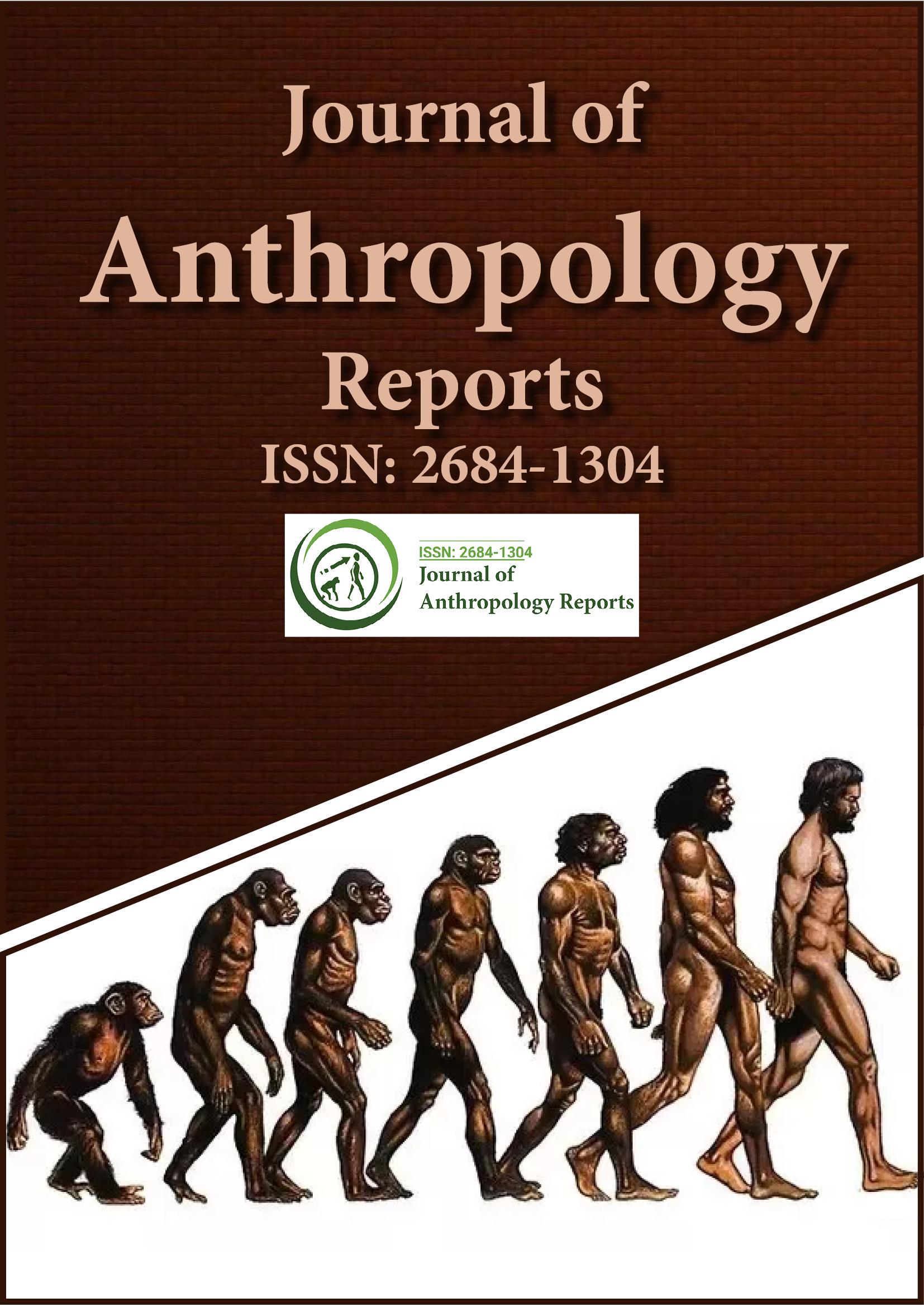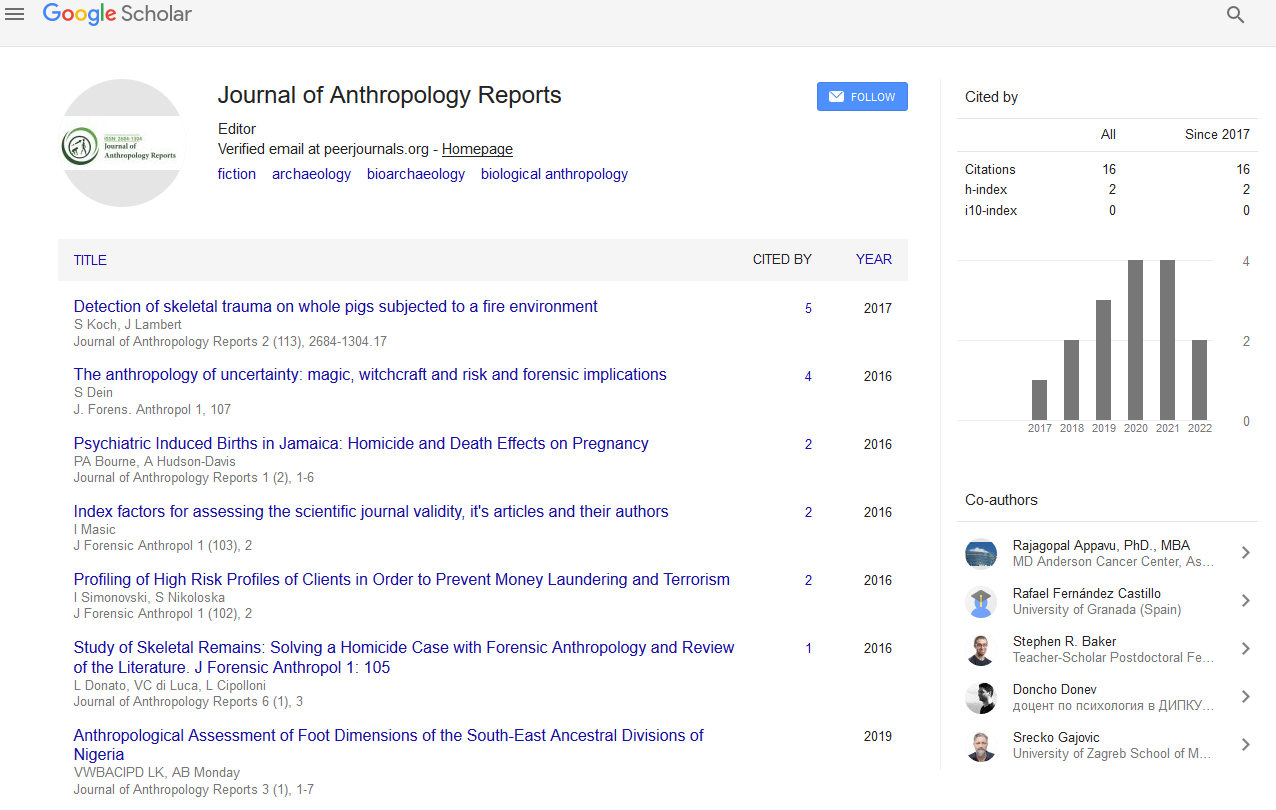Indexed In
- RefSeek
- Hamdard University
- EBSCO A-Z
Useful Links
Share This Page
Journal Flyer

Open Access Journals
- Agri and Aquaculture
- Biochemistry
- Bioinformatics & Systems Biology
- Business & Management
- Chemistry
- Clinical Sciences
- Engineering
- Food & Nutrition
- General Science
- Genetics & Molecular Biology
- Immunology & Microbiology
- Medical Sciences
- Neuroscience & Psychology
- Nursing & Health Care
- Pharmaceutical Sciences
Abstract
Study of Skeletal Remains: Solving a Homicide Case with Forensic Anthropology and Review of the Literature
Laura Donato, Alessandro di Luca, Carla Vecchiotti and Luigi Cipolloni
The present study examines a case in which signs of incised wounds were found on skeletal remains of a murder victim. The authors have studied the skeletal remains and the dynamics of the murder in order to reconstruct the kind of weapon utilized. The bones examined belonged to a woman that had disappeared from almost 10 years and where recovered from the garden of the house belonging to her former partner. The main feature of these remains was the discovery of a damage of a thoracic vertebra (T1). Our examination has the objective to enhance the macroscopic analysis of the skeletal remains in order to deduce information about the classification of specific damages and the dynamics that have caused them and the identification of the weapon that had been used. Highly decomposed bodies, as in skeletal remains, having poor or absent biological tissue on it, challenge the operator to classify the exact nature of the damage, and in some cases, it does not allow achieving a significant level of certainty. In order to solve this critical situation, Forensic Anthropology may contribute greatly by supplying a great amount of information that would not be deciphered otherwise. The bone, main study object of the Forensic Anthropology, may also register, as the soft tissues, the features of the damaging pattern. The opportunity to extrapolate this kind of data, allows analysing the dynamics and the nature of the kind of weapon used. In certain cases the incised bone present also features that allow to identify the exact structure of the weapon: of course, not every wound damages the bone, but when this actually happens, the morphological appearance of the instrument utilized remains crystallized in time, excluding of course the cases in which the bones are destroyed. Many other studies, concerning the characterization of lesions due to sharp objects, have been done and a review of related literature has been included in this article. The major goal of the authors is to highlight the importance of the information that can be extrapolated: the usefulness of the classification of the weapons used to provoke the lesion, could reach a more accurate evaluation in order to significantly help in case of forensic assessment.

